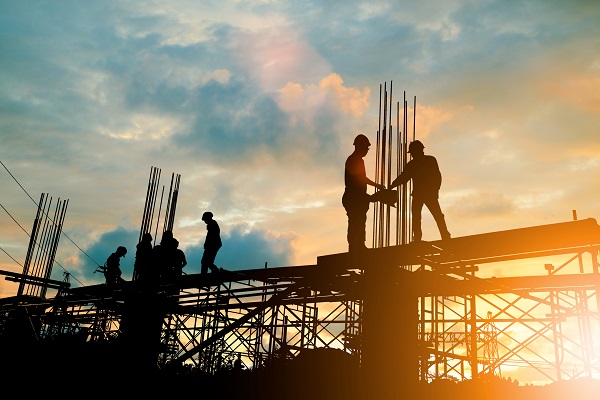Impact of Infrastructure Development on Real Estate Markets
In the ever-evolving landscape of real estate, numerous factors dynamically contribute to the value, attractiveness, and desirability of properties. Among these factors, infrastructure development stands out as a crucial determinant with far-reaching implications.
Infrastructure development is a key catalyst in transforming cities, neighborhoods, and ultimately, the real estate markets. Everything from the construction of new highways to the installation of high-speed internet can shape property trends, values, and investment opportunities.
What qualifies as an infrastructure project?
 As we dive deeper into the relationship between infrastructure and real estate, it's essential to clearly define what exactly qualifies as an infrastructure project. In the broadest sense, infrastructure refers to the fundamental physical and organizational structures and facilities necessary for the operation of a society or enterprise. They can be broadly classified into two categories: 'hard' and 'soft' infrastructure.
As we dive deeper into the relationship between infrastructure and real estate, it's essential to clearly define what exactly qualifies as an infrastructure project. In the broadest sense, infrastructure refers to the fundamental physical and organizational structures and facilities necessary for the operation of a society or enterprise. They can be broadly classified into two categories: 'hard' and 'soft' infrastructure.
Hard infrastructure represents the physical systems and networks necessary for the functioning of a modern industry. This includes roads, bridges, tunnels, water supply, sewers, electrical grids, telecommunications (including Internet connectivity and broadband speed), and public utilities. These projects are typically large, public, capital-intensive investments with long timelines and significant impact on the surrounding community.
On the other hand, soft infrastructure refers to all the institutions that maintain the economic, health, social, and cultural standards of a country. This includes educational programs, parks and recreation facilities, law enforcement agencies, emergency services, and healthcare facilities.
Both hard and soft infrastructure projects have a profound impact on the desirability and value of real estate in the surrounding areas. These projects, often large in scale and long in duration, can reshape a neighborhood, a city, or even an entire region, leading to significant shifts in real estate markets. Thus, when we speak of infrastructure development, it's not only about laying down concrete or erecting buildings but also about creating the institutional framework that allows society to function and thrive.
Does infrastructure growth benefit real estate?
The impact of infrastructure growth on the real estate sector is a common topic of discussion. The consensus is that infrastructure development tends to positively influence real estate markets.
Infrastructure projects enhance accessibility and connectivity, often transforming previously remote areas into attractive locales, boosting property values. New roads, airports, or train stations can significantly impact these transformations. Additionally, infrastructure development typically creates job opportunities, spurring demand for residential and commercial real estate.
The improvement in lifestyle amenities, including schools, healthcare facilities, and parks, further drives up residential property values. These factors also attract businesses, thus increasing commercial property values. Furthermore, signs of infrastructure growth often draw real estate investors anticipating property value growth, further fueling the market.
Can the economic impact affect the real estate market?
Economic conditions have a profound and multifaceted influence on the real estate market, and infrastructure development plays a substantial role in shaping these conditions. While the effects can be intricate and sometimes challenging to decipher, there are several clear pathways through which the economic impact of infrastructure development affects real estate markets.
- Job Creation: Infrastructure projects often involve substantial investments and can create a large number of jobs, both during construction and in the long term for operation and maintenance. This increase in employment can lead to higher demand for housing, pushing up residential real estate prices. Moreover, it can stimulate local economies, leading to greater commercial activity and higher demand for commercial real estate.
- Investment Attraction: Improved infrastructure can make a location more attractive to businesses, leading to an influx of commercial investment. This can increase demand for commercial real estate, pushing up property values.
- Population Growth: Infrastructure development can make an area more appealing to live in, attracting more residents and leading to population growth. This can increase demand for housing and drive up residential real estate prices.
- Increased Spending: The economic boost from infrastructure development can lead to increased spending power among residents, which can increase demand for retail and commercial real estate.
- Ripple Effects: The direct economic effects of infrastructure development can also lead to secondary "ripple" effects. For example, increased employment can lead to more spending at local businesses, boosting the local economy and creating additional jobs, which further increases real estate demand.
Examples of infrastructure growth impacting real estate
To better understand the effect of infrastructure development on real estate markets, let's consider a few real-world examples where infrastructure growth played a substantial role in shaping the local real estate landscape.
- The High Line in New York City: Once an abandoned railway track, the High Line has transformed into a popular linear park and an example of innovative urban rejuvenation. The development and success of the High Line led to a significant increase in the value of nearby properties. The surrounding neighborhoods experienced a surge in high-end residential, commercial, and retail development, increasing overall property values.
- The Crossrail Project in London: This high-speed train service, also known as the Elizabeth Line, has had a noticeable impact on the London real estate market even before its completion. Properties within a short walk of Crossrail stations have experienced a surge in value, as the new service will greatly reduce travel times across the city.
- The Gautrain in Johannesburg, South Africa: The construction of this rapid rail link between Johannesburg, Pretoria, and the O.R. Tambo International Airport led to increased property values in the vicinity of the train stations. The Gautrain not only improved connectivity but also signaled a major investment in South Africa's economic hub, boosting investor confidence and real estate development.
- Internet Infrastructure in Rural Areas: With the rise of remote work, especially in the wake of the COVID-19 pandemic, internet connectivity has become an essential utility. Rural areas that have seen investment in high-speed internet infrastructure have experienced increased interest from homebuyers and real estate investors, leading to rising property values.
- The Big Dig in Boston: This mega infrastructure project in Boston, aimed at improving the flow of traffic through the city, led to significant changes in the real estate landscape. With the removal of the elevated highway that once cut off the North End and Waterfront neighborhoods from the rest of the city, property values in these areas soared.
Each of these examples demonstrates how infrastructure growth can stimulate local economies, improve accessibility, enhance quality of life, and ultimately drive real estate market growth. However, they also underscore the importance of thoughtful, strategic planning to ensure that the benefits of infrastructure development are distributed equitably across communities.
Are there any negative effects?
While infrastructure improvements generally enhance real estate markets, they can also have potential drawbacks. Understanding these can inform more sustainable and equitable development strategies.
- Displacement and Gentrification: Infrastructure upgrades can raise property values, potentially resulting in gentrification. This can displace long-time, lower-income residents, disrupting communities and exacerbating social inequality.
- Construction Disruption: Infrastructure projects can cause noise, dust, and traffic delays during construction, temporarily diminishing the appeal of surrounding properties.
- Aesthetic and Environmental Impact: Some projects might be considered eyesores or can have adverse environmental effects, potentially decreasing nearby property values.
- Strain on Existing Infrastructure: Rapid real estate growth due to new infrastructure can overburden existing systems like water treatment or schools, potentially affecting quality of life and property values.
- Financial Risks: Infrastructure projects often rely on public funding. If the anticipated economic boost and real estate growth don't materialize, it could present financial risks for local municipalities.
While these potential negatives exist, careful planning and community engagement can help mitigate these effects, ensuring the benefits of infrastructure development are more evenly distributed.
How developers and investors can take advantage of infrastructure growth
Capitalizing on infrastructure growth requires strategic foresight, market insight, and a nuanced understanding of local conditions. Here are some ways developers and investors can take advantage of such growth:
- Early Investment: Investing in real estate near proposed infrastructure projects can yield significant returns as the project progresses and upon completion. However, this involves taking on the risk that the project may face delays or not come to fruition.
- Strategic Development: Developers can design projects that complement local infrastructure growth. For example, building residential properties near a new transit hub or creating commercial real estate in areas poised for economic growth due to infrastructure development.
- Public-Private Partnerships: Engaging in public-private partnerships can provide unique opportunities for developers. These partnerships can be mutually beneficial, providing public entities with private sector efficiencies and developers with lucrative opportunities.
- Market Research: Conduct comprehensive market research to understand future trends. Infrastructure projects can shape these trends, and understanding them can help investors and developers make informed decisions.
- Community Engagement: Engaging with the local community can provide valuable insights into the potential impacts of infrastructure growth. It can also help developers design projects that meet community needs and receive community support, reducing the risk of opposition or delays.
- Sustainable Practices: Aligning developments with sustainable and resilient practices can future-proof investments and make them more attractive to today's increasingly environmentally-conscious consumers.
Infrastructure development can significantly shape the trajectory of real estate markets, influencing property values and presenting opportunities for strategic investments. However, it's important to navigate these opportunities with a deep understanding of the nuanced impacts of infrastructure growth and the local real estate market.
At Millennium Properties, we bring expert knowledge, strategic foresight, and years of experience to help you navigate the dynamic real estate landscape. Whether you're looking to invest, sell, or expand your portfolio, our team is ready to guide you towards decisions that align with your objectives and the ongoing infrastructure developments.
Reach out to us today to explore how you can harness the potential of infrastructure growth for your real estate ambitions. Your future in real estate begins with Millennium Properties – your partner in making informed, forward-thinking real estate decisions.


